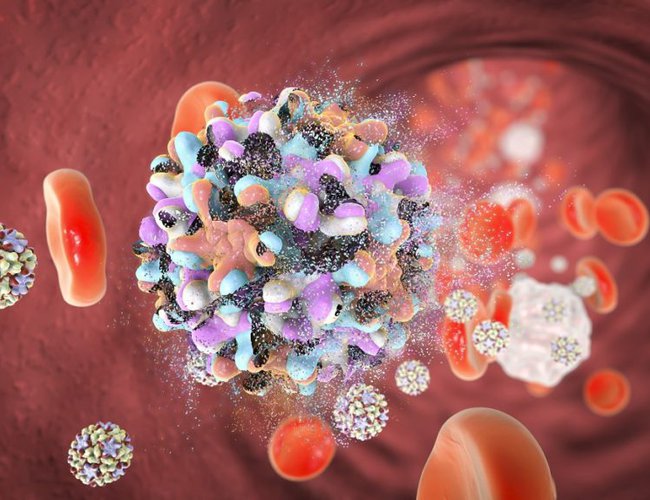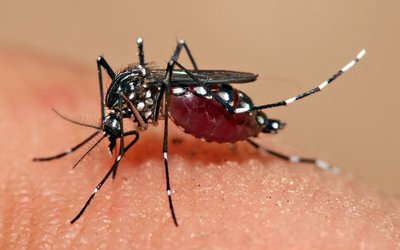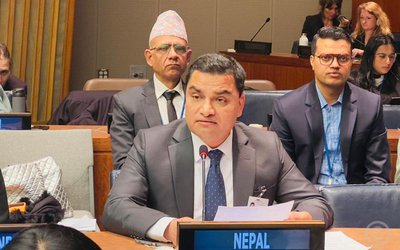
The WHO Southeast Asia Region is committed to eliminating viral hepatitis as a public health threat by 2030. An estimated 257 million people globally live with hepatitis B. Around 70 million live with hepatitis C. The Region accounts for an estimated 39 million and 10 million of the global hepatitis B and C burden, respectively. Viral hepatitis kills around 1.34 million people across the world annually - more than HIV, TB or malaria - including an estimated 410 000 in the Region. This is despite hepatitis being preventable through immunization, injection and blood safety measures, universal access to testing and treatment, and access to safe water. Hepatitis B and C continued to be responsible for significant morbidity due to chronic complications such as cirrhosis and liver cancer, which limit workforce participation and impede sustainable economic growth. To achieve a hepatitis-free future, which is the same of this year's World Hepatitis Day, all peoples in the Region must have access to quality service for hepatitis prevention, testing and treatment, for with double WHO will continue to provide Member States its full support.
The Region has in recent years made notable progress against hepatitis, in line with WHO Global Health Sector Strategy on Viral hepatitis and Regional Action Plan for Viral Hepatitis. Almost all countries have developed and are implementing nationally strategic plans that provide key guidance on hepatitis testing and treatment, and blood and injection safety. All countries have at least three doses of hepatitis B vaccine in their national immunization schedule, with the Region achieving a 91% coverage rate. Eight countries now provide the Hepatitis B birth dose. Sustained and high coverage of the hepatitis B vaccine has been crucial to the success of Bangladesh, Bhutan, Nepal and Thailand in already achieving the 2020 hepatitis B control target. Policy-makers across the Region are supporting the key populations through community outreach and by implementing opioid substitution therapy and safe injection programmes. Direct-acting antiviral drugs, which have the potential to cure 85 - 95% of the cases hepatitis C, are becoming more affordable in several of the Region's Member States. Costs have come down to as low as US$ 40 for a 12-week course.
Accelerated action is nevertheless needed to achieve the 2030 elimination target, which requires all countries to reduce hepatitis B and C mortality and incidence by 65% and an 90% respectively, based on the 2015 baseline. As WHO and its Member States continue to respond to the COVID-19 pandemic, all efforts must be made to ensure immunization and anti-natal service are maintained, and hepatitis elimination programs continue to function. To eliminate mother-to-child transmission hepatitis B specifically, WHO is committed to supporting Member States in the Region to implement new WHO guidance that highlights the need for all pregnant women to be tested for the virus and, where necessary, treated, and for every newborn to receive the hepatitis B birth dose.
Our progress must continue across all areas of work. For example, we must continue to leverage gains towards universal health coverage - one of the Region's eight Flagship Priorities - to integrate hepatitis prevention, testing and treatment at all level of care. Equity and human rights must continue to inform all that we do. We must strengthen immunization systems to overcome remaining cold chain and other barriers, especially at the primary care level. All frontline health workers should be educated on the need to provide the hepatitis B birth dose within 24 hours of birth, followed by subsequent doses. Ante-natal care must be continued to be strengthened to ensure all pregnant women are tested and treated, and to increase institutional births. Greater access to point-of-care diagnostics, specially at the peripheral health services, is essential to ensuring all people with the disease are aware of their status.
Member States must continue to identify and leverage key accelerators, including pooled procurement mechanisms and flexibilities in patent laws that can increase access to essential drugs, communication and outreach strategies that can enhance multisectoral awareness and action, and resource mobilization strategies that will ensure all national plans are fully costed and funded. Innovation must remain central to the response, for with Region's new Strategic and Technical Advisory Group will provide critical support. Eliminating hepatitis as a public health trade by 2030 will be an immense challenge, but it is a challenge that WHO and its Member States in the reason can - and must- overcome. On World Hepatitis Day, WHO reiterates its commitment to achieving the 2030 target, and to supporting all Member States in the reason to create a future that is hepatitis free, and which is healthier and more sustainable for all.
Dr Poonam Khetrapal Singh, Regional Director, WHO South-East Asia Region

Dr. Poonam Khetrapal Singh
Singh is WHO Regional Director for South-East Asia
- Achieve Gender Equality In This generation
- Mar 07, 2020
- Develop And Implement Strategies To Prevent Suicide And Promote Mental Health
- Oct 09, 2019
- Accelerate Health Equity For Older People And Advance Universal Health Coverage
- Sep 30, 2019
- Accelerate Actions To Slash Tobacco Use And Advance Health Across The WHO South-East Asia Region
- May 30, 2019
- Defeating Malaria Demands High-impact, Country-Led And Owned Approaches
- Apr 25, 2019














